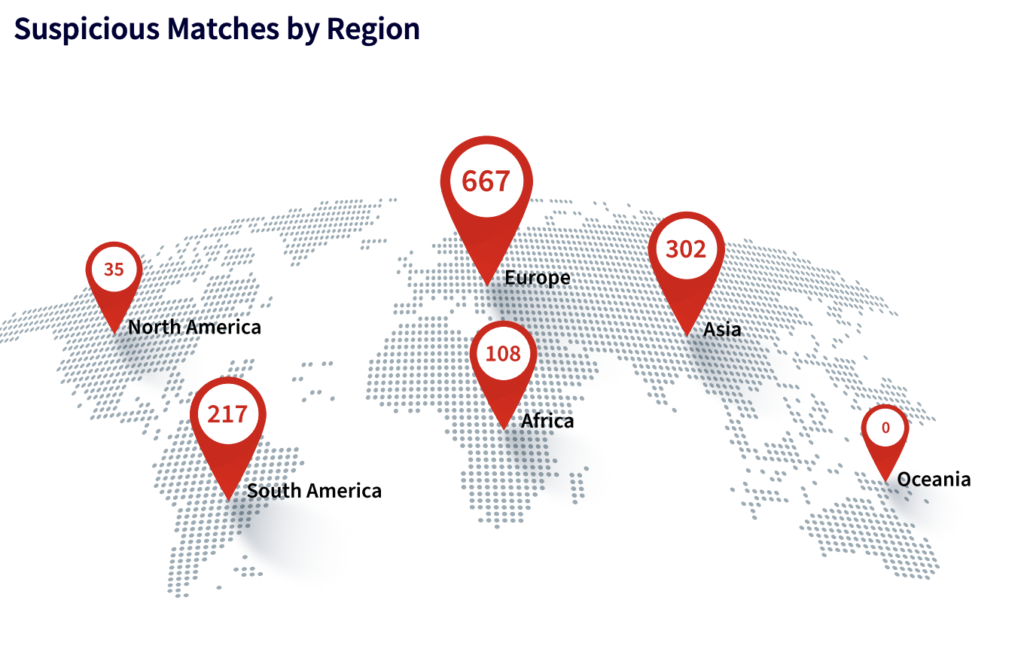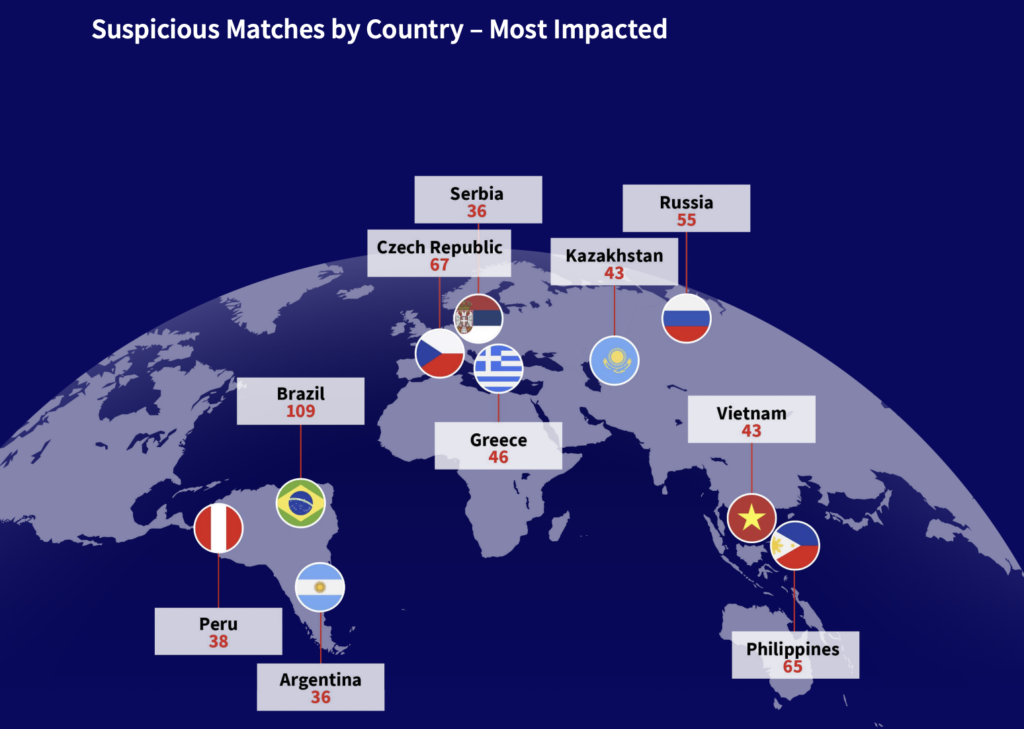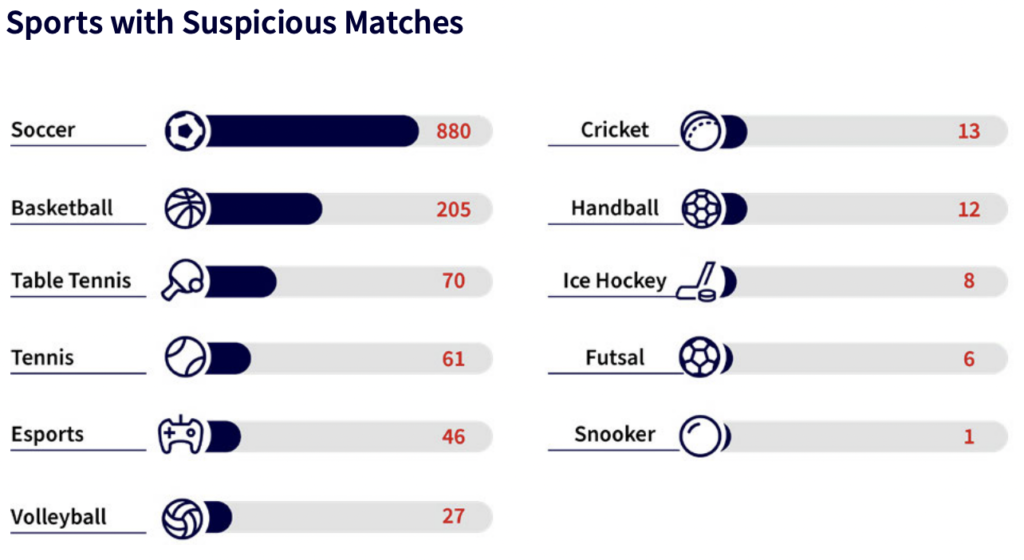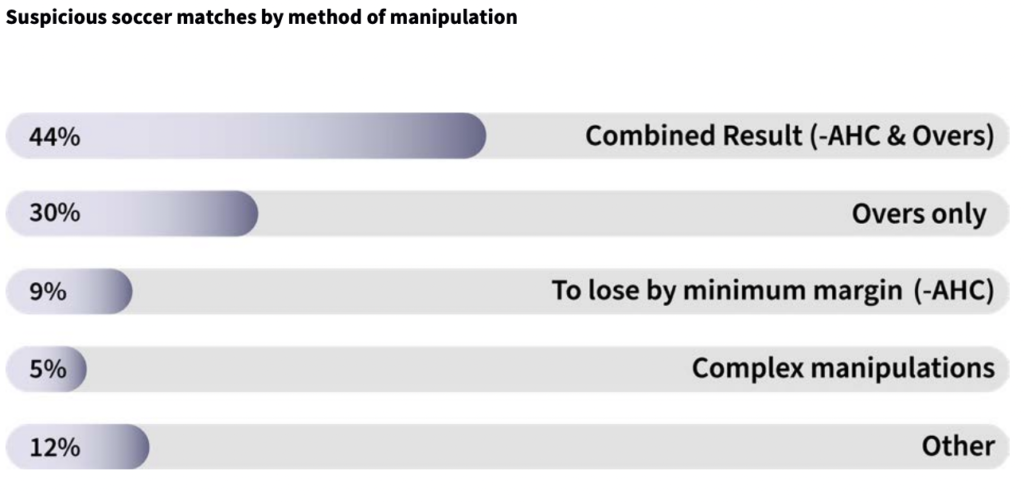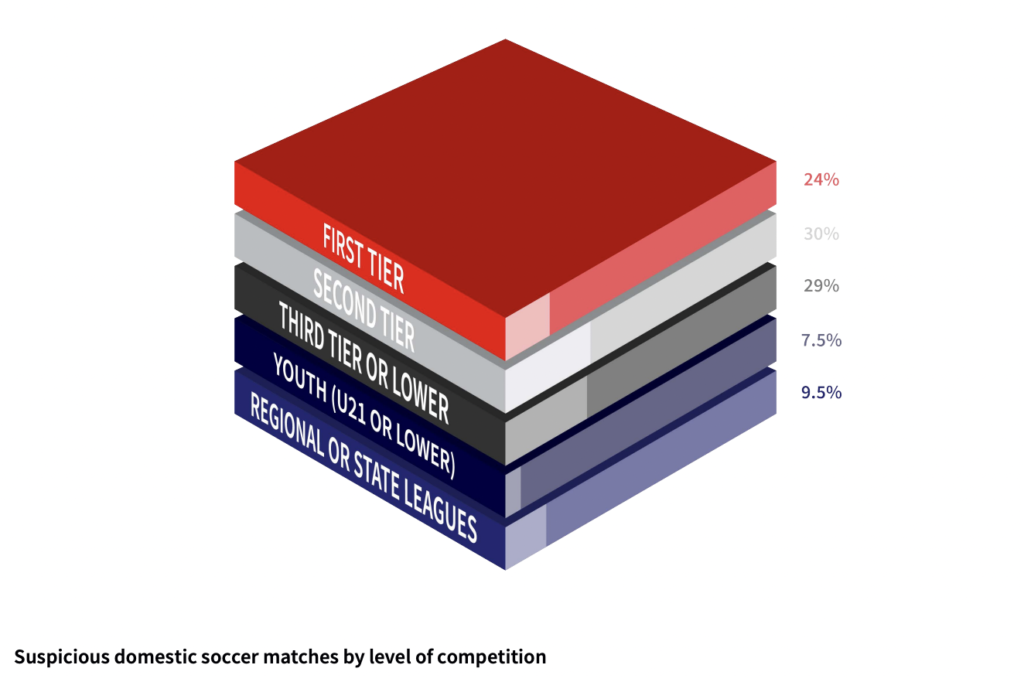March 3 – Sportradar Integrity Services in its third annual integrity report has highlighted a total of 1,329 suspicious matches in 2023, 880 of which were in football.
The report, titled ‘Betting Corruption and Match-finxing in 2023’, is based on Sportradar’s monitoring of 850,000 events and matches across 70 sports. The 1,329 suspicious matches occurred in 11 sports in 105 countries.
Sportradar said the figures are broadly similar to their findings in 2022.
“Compared to 2022, the data indicates the suspected manipulation rate in all sports remained steady at 0.21%, or one in every 467 matches in 2023. Similarly, the analysis has marked no single sport having a suspicious match ratio greater than 1%, confirming that 99.5% of sporting events monitored had no suspicious betting detected,” said the report.
The 66% of the total suspicious matches in football is a small increase on 2022, which saw 64% – in actual terms, this represented a rise of 103 matches.
Sportradar said that “the vast majority of suspicious matches continue to feature suspicious live betting and this occurred in 95% of cases. Within this group of matches, the suspicious betting emerged during the first half of the contest in 70% of cases. This is not unexpected, given that dedicated first half markets were also targeted in around 36% of suspicious matches, and because the opening 15 minutes continues to be the time period most affected by suspicious betting patterns globally.”
Sportradar reports a 50% decrease in the number of cases which saw the first half markets targeted, with more matches seeing the full-time markets targeted.
“Combined result manipulations continue to be the most common method of suspected manipulation globally, accounting for 44% of suspicious matches. This allegedly involves a team losing by a minimum 18 margin of goals (through the Asian Handicap line) and also ensuring a certain number of goals are scored (‘Overs’). The second most common suspected manipulation type continued to be ‘Overs only’ (30%), which only requires a minimum number of goals to be scored, regardless of how the goals come about,” said Sportradar.
Correct score fixes account for 5% of all suspected manipulations globally.
“However, it should be highlighted that in one region, correct score manipulations represented 30% of all suspicious matches. This is very high and far above the global average, and is representative of more teams being involved in match manipulations in this region, as correct score fixes typically need both teams, and the complicity of a large number of players to ensure their success,” said Sportradar.
The number of top tier matches affected, increased from 17.5% in 2022 to 24% in 2023. “Typically, the highest tier of national soccer is less susceptible to such practices, as the higher salaries of players serve as a deterrent, and preventative measures like player education and thorough vetting are more prevalent at these elite levels,” said Sportradar.
However, some regions do not have the safeguards in place, creating an opportunity for match-fixers.
Andreas Krannich, EVP, Integrity, Rights Protection and Regulatory Services, said: “Continued investment in the development of technology is key to detecting otherwise hard-to-find occurrences of match-fixing. In combination with access to account-level data, collaboration across the industry and human experts, we have a suite of powerful tools to help both prevent and detect risks to sports integrity. Further advancements in the fight against match-fixing will be possible as the AI models continue to learn and we will keep honing our expertise to protect sport from manipulation.”
Contact the writer of this story at moc.l1745206510labto1745206510ofdlr1745206510owedi1745206510sni@n1745206510osloh1745206510cin.l1745206510uap1745206510


